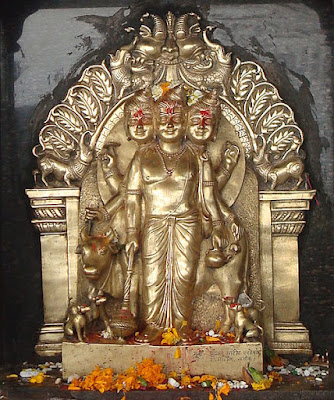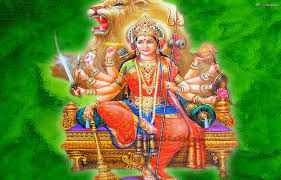

SHRIKSHETRA KURAVPUR is in Karnataka State, Dist. Raichur. It is situated on the Banks of Krishna River, 25 Km from Raichur. It is an island surrounded by holy waters of rivers Krishna. SHRIKSHETRA KURAVPUR is also known as KURGUDDI. Kuruvapur is a famous place of lord Dattatreya. It is situated in the state of Karnataka In India.The first incarnation of Lord Dattatreya in kaliyuga is Sripada Vallabha. The birth place of Sripada vallabha is Pithapuram which is situated in Godavari district of Andhra Pradesh. He was taken his birth in the family of Appalaraju Sarma and Sumathi. He has performed penance at about 35 years for Gnana, Viragya siddhi at Kuravapur and closed his avathara On Ashweeja bahula dwadasi (Hastha star) in Krishna river of Kuravapur . The day is known as “GURUDWADASI”. But till today he is in sukshma rupa there and giving indirect darshan to the devotees who are having full faith on him. This place Is termed as Gurudweepa in Scanda purana.This holy land is donated by a Rajak devotee. Since it is donated to temple priest, it is called AGRAHAR Temple is built as per Hemad Pandit Style. Old Banyan Tree, Audumbar, Gaytri Suryodasana and Cave where his holyness Sripad Srivallabh has done Dhyna. Now the cave has been refurnished and Nirgun Paduka (Foot Print) are kept for Darshan. Nagarkhana has been built by SHRI TUKDOJI HOLKAR. PARAMPUJYA VASUVANANDA SARASWATI MAHARAJ came to this place in 1911 (Vaishakh Shukla 6.) Maharaj did his 21st Chaturmas during his stay. A scorpion bite him when he missed his daily stostra offering prayers to shripad Shrivallabh is also one of the attractions. Mandir Utsav and religious rites performed here are a legacy of Parampujya Vasusanand Sarawati Maharaj. Parampujya Shridhar Swami has also stayed here. In the recent times Dattasam ptradayees Parampugya Gulavani Maharaj, Rangavdhut Maharaj, Nana Maharaj Taranekar, Mama Deshpande have done the Tapasya at this holy place. Recent period Datt Bhakta Also completed the construction work in Puratan Vatvruksha & also Audumbaras. Construction work of Shivaling and caves narrow point, part rooms also constructed for “Sadhakas”.
















































